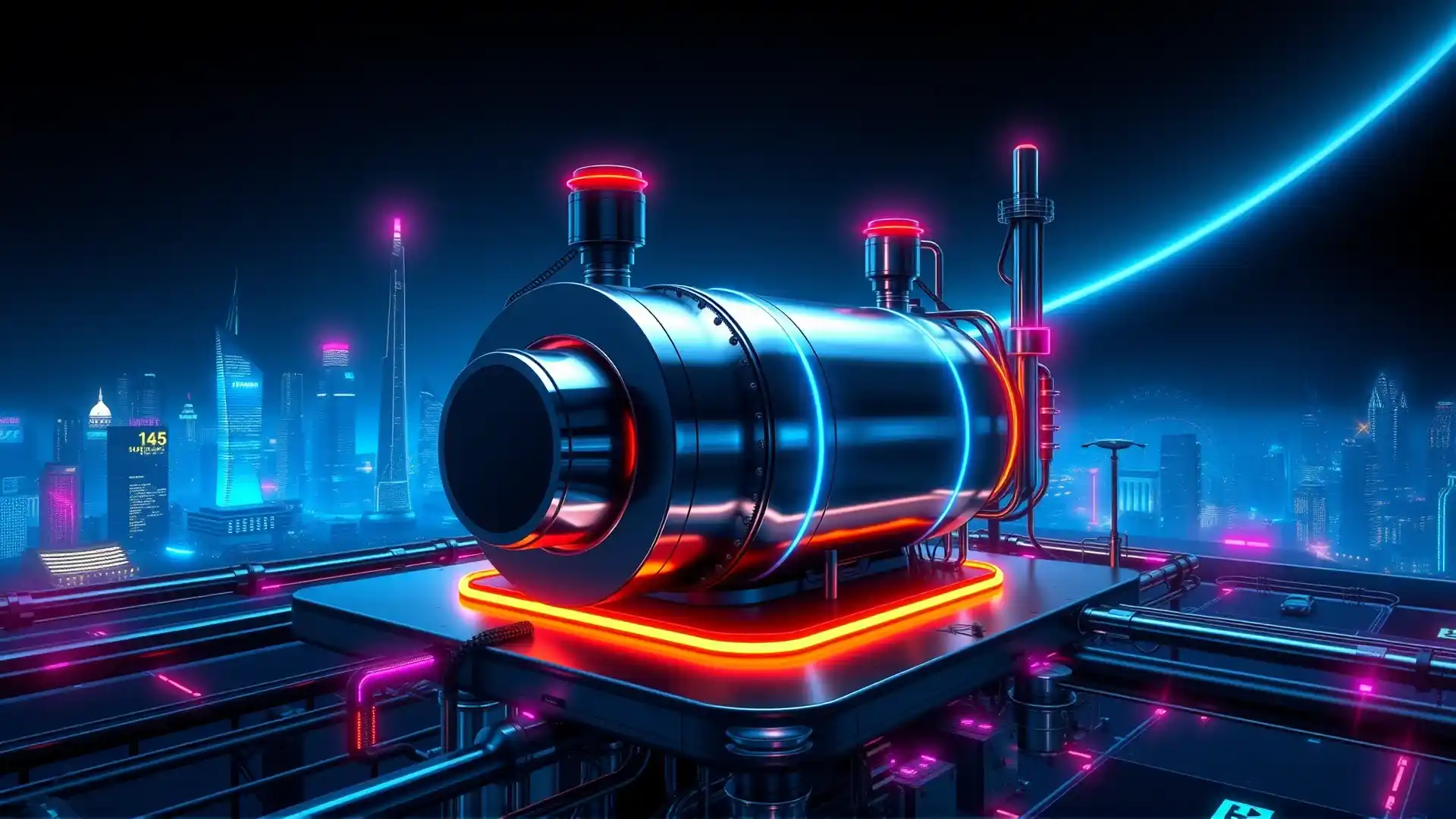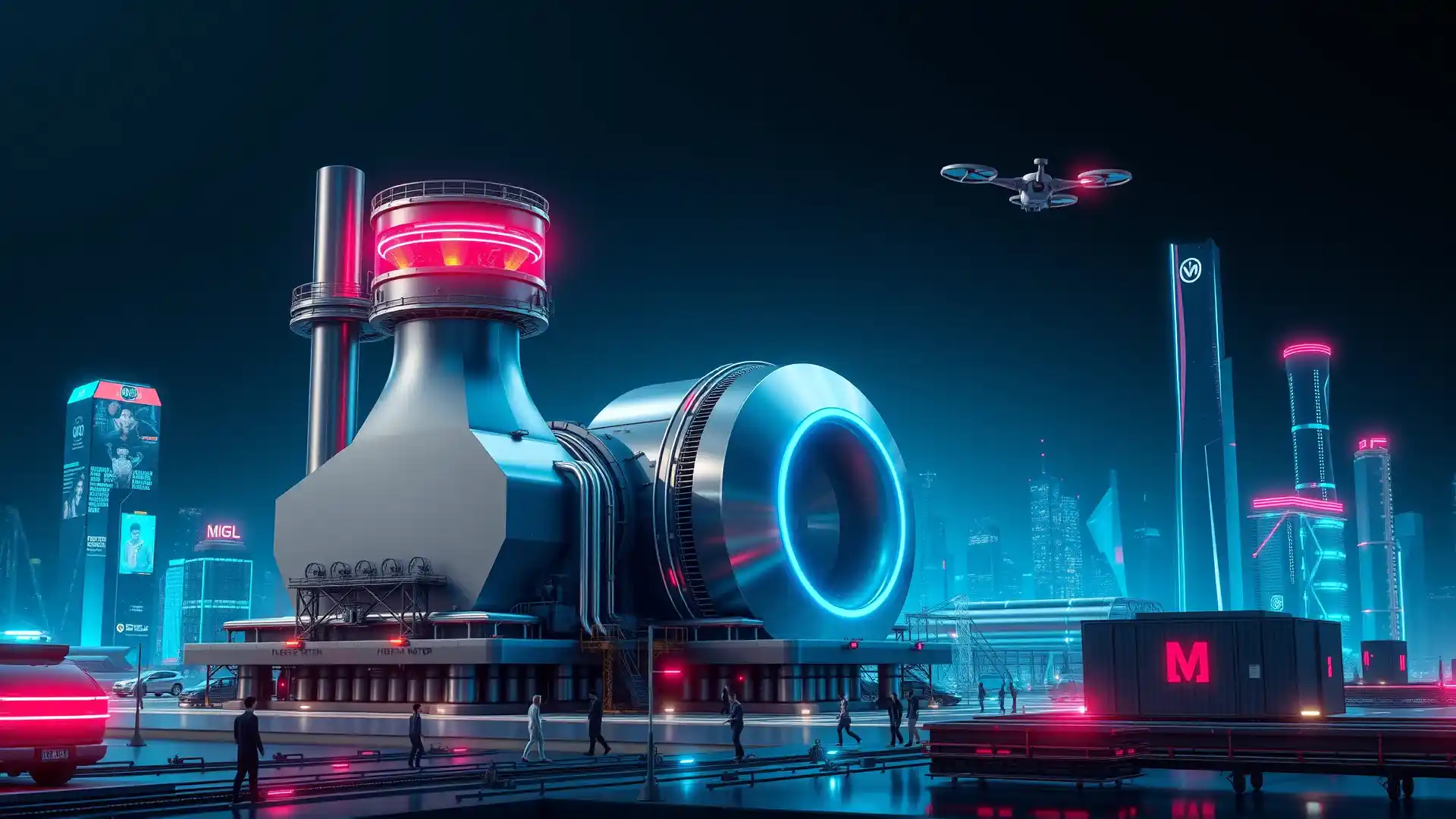Table of Contents
What is Nuclear Energy?
Nuclear energy is the energy from the nucleus of atoms that has been released in fission or fusion. Atoms, such as uranium, split during fission, and this splits energy to produce electricity. Atoms combine to release energy, which is what happens in a fusion process. This process is not yet commercially viable. The concerns are over safety, radioactive waste, and nuclear weapons, though it is efficient with low carbon emissions.
With technology being the hallmark of the most successful progress across the globe, the world has never been in more pressing need of clean, reliable, and scalable energy. Energy from nuclear has long been hailed for the capability to produce enormous amounts of electricity without spoiling the environment.
Today, this constitutes a cornerstone in the powering of technological advances. The confluence of nuclear energy with cutting-edge technologies opens up new avenues of sustainable development and innovation, thus ensuring a bright and tech-driven future.
Nuclear Energy as a Sustainable Solution
Nuclear energy is one of the most crucial in the tech world because it offers a reliable, high-density source of power for many applications. Here are some key reasons and uses of nuclear energy in technology:
- Reliable Power Generation: A nuclear power plant gives a very reliable and stable power supply continuously that is the heart of any industrialization, modern cities, or technology infrastructure with steady energy requirement.
- High-Energy Density: Nuclear energy is capable of delivering large amounts of energy with small amounts of fuel, which makes it effectively generate power in high-tech facilities and reduce reliance on fossil fuels.
- Space Exploration: Nuclear energy, mostly by means of small nuclear reactors or radioisotope thermoelectric generators (RTGs), provides power for spacecraft and rovers. These systems have been used in far-off planetary missions where solar energy is less.
- Medical Applications: Nuclear technology is also very extensively used in the field of medicine through devices and treatments such as cancer radiation therapy, medical imaging, for instance, PET scans, and even the sterilization of medical equipment.
- Desalination and Hydrogen Production: Nuclear reactors can be applied for desalination or to generate hydrogen to support future tech advancement and other clean energy sources.
- Research and Innovation: Nuclear reactors have been used to create new materials, simulate conditions, and to develop technologies useful in a wide array of industries: electronics, material science, pharmaceuticals, to name a few.

Breakthroughs in Nuclear Energy Technology
Nowadays, Tech companies are highly interested in Nuclear Power for more than one reasons. The urgent need for stable and sustainable resources of energy led to this switch. Here are the reasons:
Massive Energy Needs
Major data centers of technology giants such as Google, Microsoft, and Amazon require a large amount of electricity to power their servers and cooling systems. Energy consumption is accelerating with the increasing growth of business in AI and cloud computing for these companies.
Commitments to Sustainability
Many tech companies have committed to becoming carbon neutral or achieving net-zero emissions by certain dates. For instance:
- Google plans to run entirely on carbon-free energy by 2030.
- Microsoft plans to be carbon-negative by 2030.
Nuclear power is a zero-carbon energy source that meets these objectives since it does not emit any greenhouse gases when in operation.
Energy Reliability and Stability
Solar and wind energy sources are intermittent and rely on weather. Although there are now batteries and energy storage systems that can help bridge that intermittency a bit for large-scale operations, the use of these renewable sources cannot yet provide a consistent, reliable, and therefore risk-free, 24/7 energy supply. In these regards, nuclear power provides assured energy output.
Small Modular Reactors (SMRs)
Advances in nuclear technology, especially through its Small Modular Reactors (SMRs), make nuclear power more accessible and practical for the private sector. SMRs are:
- Smaller and less expensive to build than traditional reactors.
- Safer due to modern passive cooling systems.
- Scalable, allowing companies to adjust their energy capacity as needed.

The Synergy Between Nuclear Power and AI
AI is a user of nuclear energy but, above all, is a major facilitator of nuclear energy optimization. Predictions of the necessity for maintenance can be made through the use of AI systems. They also enhance the performance of the reactor, increasing the efficiency in the distribution of energy.
Nuclear energy further supports its utility in providing the necessary power requirements of technologies and supercomputers which depend on AI-driven processes. This mutual relationship produces a feedback mechanism in which nuclear power supports AI, and conversely, AI enhances nuclear activities.
Global Trends: Nuclear Energy in Tech Hotspots
Globally, there is realization of the strategic importance of nuclear energy in driving technological innovation. Case studies include data centers in Finland powered by nuclear energy with low-carbon operations and initiatives under China’s ambitious nuclear program to support green tech and research facilities.
In the United States, advancements in SMR deployment seek to power energy-intensive industries in a minimally environmentally impactful manner.
Tech Giants Embracing Nuclear Energy
Major technology companies, such as Microsoft, Amazon, and Google, are increasingly investing in nuclear energy to power their data centers. This is because the increasing energy demands of artificial intelligence (AI) and cloud services require reliable, carbon-free electricity.
- Microsoft has teamed up with Constellation Energy to revive the Three Mile Island nuclear plant in Pennsylvania. This deal consists of Microsoft buying all the electricity the plant will produce for its AI data centers for the next 20 years. It is estimated to have a cost of $1.6 billion, and it should be operational by 2028 and supply over 835 megawatts, which is enough to supply about 800,000 homes.
- Amazon Web Services (AWS) has revealed partnerships with X-Energy, Energy Northwest, and Dominion Energy to establish nuclear energy initiatives as part of efforts to meet climate goals. These include deploying four advanced small modular reactors in Washington state by the early 2030s. This is one of the ways that AWS is pursuing a stable and sustainable energy supply to fuel its data centers.
- Google agreed to buy 500 megawatts of power from six or seven SMRs currently under development at Kairos Power. These reactors will be operational by 2030, providing clean electricity to Google’s data centers. This is all part of the much broader effort on the part of Google to infuse advanced clean energy technologies throughout its global infrastructure.
The main drivers of these investments are the significant and increasing energy consumption of data centers, especially with the advent of AI applications. Data centers already consume more than 4% of the energy generated in the United States, which is expected to increase to more than 9% by 2030. Nuclear energy is a reliable and carbon-free source of power that can meet these growing needs, hence supporting tech companies in their sustainability and operational goals.
Challenges and Opportunities
Despite its many advantages, nuclear energy still presents several challenges to be overcome in order to fully capitalize on its benefits. Safety, waste management, and public perception are some of the major concerns.
However, improvements in reactor design, recycling of waste, and open communication can help minimize these problems. The global movement toward decarbonization and technology development creates an excellent opportunity for nuclear energy to consolidate its place in the energy mix.
Conclusion
Nuclear energy is poised to play a pivotal role in the technological innovations of tomorrow. Clean, reliable, and scalable energy solutions that it can offer fit the demands of a world dominated by technology.
It is in a position to take advantage of current challenges and on-going developments to solidify its role in a sustainable, technology-powered future that supports growing reliance on digital infrastructure.